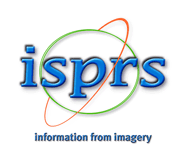Comparative Analysis of UAVSAR Polarimetric Decompositions for Wetland Aboveground Biomass Mapping Using Machine Learning Models
Keywords: Wetland, Biomass, UAVSAR, Machine learning, Polarimetric decomposition
Abstract. Wetlands play a vital role in carbon sequestration, biodiversity conservation, and water regulation, making their accurate monitoring essential for environmental management. Synthetic Aperture Radar (SAR) is particularly effective for assessing wetland ecosystems due to its ability to penetrate vegetation and capture biomass dynamics under various weather conditions. This study leverages UAVSAR quad-polarization data to estimate aboveground biomass (AGB) in the wetlands of southern Louisiana, USA, a region with diverse wetland types and significant ecological importance. A total of 103 features were extracted from UAVSAR data using various polarimetric decomposition methods, including Zhang, Huynen, Van Zyl, and others. Three machine learning models, including Support Vector Machine (SVM), Random Forest (RF), and Histogram-based Gradient Boosting (HGB) were employed to evaluate the effectiveness of these decompositions. Results indicated that the Zhang decomposition, combined with HGB, achieved the highest accuracy with an R2 of 0.74 and an RMSE of 183.95 g m−2, outperforming other decomposition methods and classifiers. Additionally, RF showed strong performance, while SVM consistently underperformed. These findings highlight the potential of UAVSAR-derived polarimetric features for wetland biomass estimation, demonstrating that targeted decomposition selection and advanced machine learning models can enhance accuracy. This study provides valuable insights for improving wetland monitoring and conservation efforts, supporting ecosystem management, and climate change mitigation strategies.





